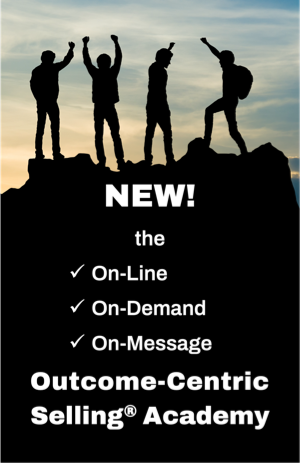Getting the Right Salespeople in the Right Seats on the Right Bus – In 2025
July 2, 2025

More than two decades ago - in “Good to Great” - Jim Collins spoke about getting the right people on the bus, in the right seats, and the wrong people off the bus. In 2025, with B2B sales evolving faster than ever, it’s a framework that still resonates – if adapted to today’s sales landscape. In complex, consultative selling environments, sales talent management can make or break our growth trajectory.
But let’s be honest: many sales organizations struggle with mismatched talent, revolving doors, and underperforming teams. How can we apply Collins’ insight to recruitment, motivation, development, and retention – and deal effectively with misfits?
Let’s start with recruitment:
Recruitment: Stop Hiring for Pedigree, Start Hiring for Fit and Potential
Too many companies still rely on traditional markers of “sales excellence”: past quota attainment, big-brand employers, or a high-energy persona. These may have worked in simpler times, but they’re insufficient for modern B2B sales.
In 2025, top salespeople are collaborative, coachable, commercially intelligent, and comfortable with ambiguity. They engage C-level buyers, navigate long buying cycles, and bring structure to messy decision-making processes.
Traditional recruitment approaches - CVs, interviews and generic psychometrics - are incapable of accurately assessing these capabilities. I believe any new sales hire must go through a sales-specific competence assessment - such as those offered by Objective Management Group.
We also need to remember that someone who thrives in one sales role may not thrive in another. Clarity about role requirements (competencies, behaviours, and success metrics) can help to prevent costly mis-hires.
Motivation: Align the Bus Route with Their Ambitions
Motivation in 2025 isn’t just about money. Of course, compensation still matters – but today’s sales talent also wants autonomy, purpose, and the chance to grow.
The best leaders take time to understand what drives each person. Is it career progression? Mastery of a new product set? Geographic mobility? Development opportunities must be tailored to reflect this.
Salespeople don’t just want to work in high-performing teams – they want to belong to one. Culture plays a critical role in motivation. Teams with a shared mission, transparent leadership, and psychological safety perform better and retain longer.
Finally, don’t underestimate the motivational value of removing underperformers. Few things frustrate high performers more than carrying the weight of low standards.
Development: Sales Is Now a Learning Profession
Gone are the days of a two-week onboarding followed by occasional training. In 2025, sales is a dynamic, knowledge-intensive discipline. Offerings (and competition) are evolving rapidly. Buyers are more sophisticated. AI is changing how salespeople work daily.
This means development must be continuous and personalised, using data to spot coaching opportunities – not just win/loss ratios, but deal velocity, activity quality, stakeholder engagement, etc.
Modern sales enablement teams act more like performance coaches than content factories. Invest in manager capability – frontline sales leaders must know how to coach, not just forecast.
And don’t forget cross-functional learning. The best salespeople in 2025 understand product, marketing, finance, and customer success. Internal mobility and project-based assignments can build breadth and deepen engagement.
Retention: Build Careers, Not Just Roles
You’ve hired someone great. They’re hitting numbers. The risk now is losing them to a competitor who offers more personal growth.
Retention isn’t just about throwing money at the problem. It’s about creating a narrative of progress: "Here's where you are, where you could go, and how we’ll help you get there."
In sales, that could mean role progression (SDR → AE → Strategic AE), path variety (sales → customer success or solutions consulting), or specialist excellence (e.g., enterprise hunter).
Transparency is key. Provide clarity on what success looks like, what the promotion paths are, and how people will be supported along the way.
And don’t overlook wellbeing. Burnout is a real issue in high-intensity sales environments. Offer flexibility, mental health support, and realistic targets that balance ambition with sustainability.
Dealing with Misfits: When Someone's on the Wrong Bus – or in the Wrong Seat
Even with the best recruitment process, misalignment happens. The cost of carrying someone who can’t or won’t perform is high – not just financially, but culturally.
The key is early, honest diagnosis. Is it a skills gap, a motivation issue, or a mismatch with the role? Sometimes, a repositioning can unlock potential – moving someone from hunting to farming, or from quota-carrying to enablement.
But if someone is truly in the wrong seat and on the wrong bus, managers need to act decisively. Too many managers delay, hoping things will improve. Meanwhile, morale drops, and the performance bar is quietly lowered.
Handling exits with dignity is critical. People need to be treated respectfully and supported in transition - and managers need to learn from the experience. What signals were missed? How can we improve hiring, onboarding, or role design?
Final Thoughts: Talent Is the Strategy
In 2025, sales strategy is talent strategy. Our go-to-market model, tech stack, or product edge won’t deliver results unless the right people are executing it.
“The Right people, in the right seats, on the right bus” is more than a slogan. It’s a management discipline – and one that must be continuously revisited. Our bus route will inevitably change. So will our people. We need to regularly reassess alignment, reconfigure roles, and invest in the human side of sales performance.
That’s how great sales teams are built – and how they stay great.
And it's why the evidence-based, science-backed assessment of the attitudes, behaviours and sales competencies of every existing employee and potential new hire is so vital - and why we've partnered with Objective Management Group.
This article was first published in the July 2025 edition of Top Sales Magazine.


Comments